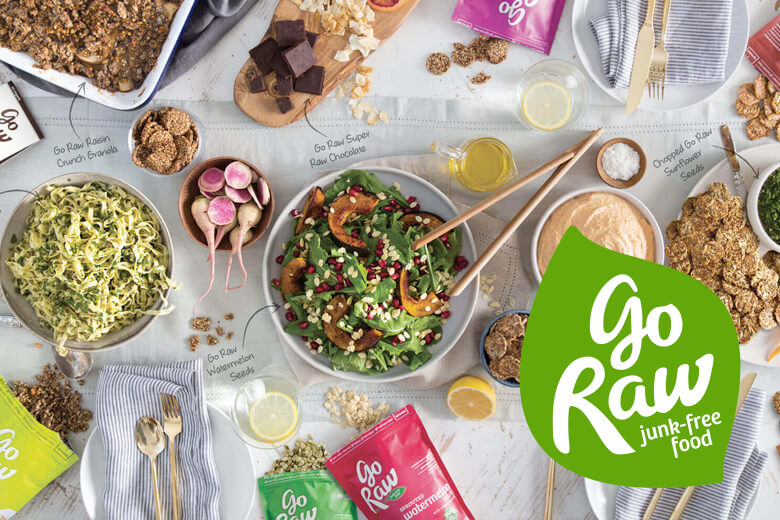E-commerce Website Design: Elevating User Experience with Comprehensive Best Practices
In the fast-paced realm of e-commerce, the design of your online store serves as a pivotal factor in capturing and retaining the attention of your audience. A well-crafted and user-friendly website not only establishes a positive initial impression but also guides users seamlessly through their entire shopping journey.

In this comprehensive guide, we will delve into essential best practices for designing effective and user-friendly e-commerce websites, offering an exploration of key aspects such as navigation, product pages, checkout processes, responsive design, trust-building elements, and performance optimization.
1. Intuitive Navigation: Navigating the Digital Marketplace
Navigation is the backbone of any successful e-commerce website, acting as the primary conduit for users to discover products. Achieve intuitive navigation through the following best practices:
a. Clear and Consistent Menu Structure
Hierarchy Planning: Organize products logically with a well-defined hierarchy of categories and subcategories. This ensures that users can quickly locate their desired items.
Consistency: Maintain a consistent menu structure across the website. This coherence enhances the user experience by providing familiarity and ease of navigation.
Tip: Using "Mega Menus" which display multiple categories in one drop-down menu is key. This allows for an easy and quick overview of the important links you want the user to find.
b. Visible Search Bar
Prominence: Place a prominently visible search bar in the header of your site. This empowers users to swiftly find specific products, contributing to a seamless browsing experience.
Auto-Suggest Feature: Implement an auto-suggest feature within the search bar. This functionality assists users in refining their searches efficiently, enhancing the overall search experience.
c. Mobile-First Navigation
Responsive Design: Prioritize a mobile-first design approach, ensuring that navigation functions seamlessly on smaller screens as well as on larger screens. This guarantees a consistent experience across diverse devices.
Mobile-Friendly Menu: Implement a mobile-friendly menu, such as a hamburger menu. This ensures easy access to categories, even on mobile devices with limited screen real estate.
2. Optimizing Product Pages: Crafting Persuasive Showcases
Product pages serve as the focal point where users make crucial purchase decisions. Optimize these pages to captivate visitors and encourage conversions:
a. High-Quality Product Images
Visual Appeal: Display clear, high-resolution images showcasing the product from multiple angles. This enhances the visual appeal and provides a comprehensive view of the product.
Zoom Functionality: If you have products with small yet important details, implement zoom functionality to enable users to closely examine product details. This interactive feature adds a layer of engagement to the browsing experience.
Tip: If you can create videos, it's even better to capture your visitors' attention and interest.
b. Compelling Product Descriptions
Conciseness: Craft concise yet compelling product descriptions. Highlight key features and benefits to provide users with the information needed to make informed decisions.
Relevant Information: Include relevant details such as size options, color variations, and materials used. This ensures that users have a comprehensive understanding of the product.
c. User-Generated Content
Building Trust: Incorporate customer reviews, ratings, and testimonials on product pages. User-generated content builds trust and provides social proof of the product's quality.
Real-Life Context: Showcase user-generated images of the product in real-life situations. This adds authenticity to the product presentation and aids potential buyers in visualizing real-world use.
Tip: Many services like Yotpo or Stamped.io provide userful features to display user images and reviews.
d. Clear Call-to-Action (CTA)
Prominence: Use a prominent and contrasting CTA button to guide users toward adding the product to their cart. The CTA should be visually distinct and strategically placed for optimal visibility.
Persuasive Language: Employ persuasive language in CTAs, such as "Add to Cart" or "Shop Now." This encourages immediate action and propels users towards the conversion funnel.
Tip: Integrating the price in the button label is a nice design feature that speeds up action (i.e. cliking the button). The visitor sees the price right there and doesn't need to search for it.
3. Seamless Checkout Process: From Cart to Completion
The checkout process represents the culmination of the user journey and should be streamlined for an optimal user experience. Simplify and enhance the checkout process with the following best practices:
a. Guest Checkout Option
User Convenience: Offer a guest checkout option to streamline the process, catering to first-time customers. This reduces friction and encourages users to complete their purchases swiftly.
Benefits of Account Creation: Clearly communicate the benefits of creating an account, such as order tracking and exclusive offers. Provide users with incentives to register while emphasizing the convenience of account-related features.
b. Progress Indicators
Clarity: Provide a clear progress indicator throughout the checkout process. Users should be informed about the number of steps involved, reducing uncertainty and promoting a sense of control.
Section Breakdown: Break down the checkout steps into easily digestible sections. Include stages such as cart review, shipping details, and payment information. This simplifies the process and enhances user comprehension.
Tip: Shopify does this flawlessly by providing a one-page checkout area that includes all relvant and important fields the user needs to include, all the while consistantly displaying the cart contents and price breakdown.
c. Multiple Payment Options
Flexibility: Support a variety of payment options to accommodate user preferences. Offering diverse payment methods ensures that a broader range of users can complete transactions with ease.
Trust-Building: Clearly display accepted payment methods and security icons. This builds trust and assures users that their financial information is handled securely.
d. Transparent Shipping Costs
Upfront Communication: Clearly communicate shipping costs upfront to avoid surprises at the final stage of checkout. Transparency in pricing is crucial for fostering trust and preventing cart abandonment.
Promotional Rates: Consider offering free shipping thresholds or promotional shipping rates. This not only incentivizes purchases but also enhances the overall perceived value of the transaction.
Tip: Integrating a "free shipping threshold calculator" into your cart is a great way to increase sales. Visitors will see how much more they need to spend in order to get free shipping, or other discounts or promotions.
e. Mobile Optimization
Responsive Design: Ensure a seamless checkout experience on mobile devices with a mobile-optimized design. The entire checkout process, including form submissions and payment, should be optimized for various screen sizes.
Form Optimization: Minimize the number of form fields and use smart defaults for quicker input. This is particularly important on mobile devices, where users may face challenges with extensive data entry.
4. Responsive Design Across Devices: Universal Accessibility
Responsive design is paramount in an era where users access websites on a variety of devices. Implement the following best practices for a consistent and accessible user experience:
a. Mobile-First Approach
Strategic Design: Design the website with a mobile-first approach. Consider the constraints of smaller screens and prioritize essential content and features for mobile users.
Prioritization: Identify and prioritize critical content and functionalities for mobile users. This ensures a streamlined experience without compromising on essential features.
b. Responsive Product Images
Optimization: Optimize product images for fast loading on mobile devices without compromising quality. Images should load swiftly to maintain user engagement and prevent frustration.
Touchscreen Functionality: Ensure that image galleries and zoom functionality work seamlessly on touchscreens. This provides an interactive experience and enhances the overall user satisfaction. (i.e swiping through an image gallery)
c. User-Friendly Forms
Simplified Input: Simplify form fields and input methods for mobile users. The goal is to enhance ease of use and minimize user effort during the checkout and registration processes.
5. Security and Trust Signals: Building Confidence
Building trust is paramount in e-commerce, where users share sensitive information. Instill confidence in your users by incorporating these trust-building elements:
a. SSL Certificates
Secure Connection: Ensure that your website has a valid SSL certificate. This creates a secure connection between the user's browser and your server, encrypting sensitive information during transmission.
Tip: If your site is on Shopify, this is added automatically. On other servers, primiarly used for Wordpress websites, this needs to be enabled separately. But don't worry, it's easy and sometimes even automatic.
b. Clear Policies
Transparency: Maintain transparent and easily accessible privacy policies. Clearly communicate how user data is handled, stored, and utilized. Transparency instills confidence and demonstrates a commitment to user privacy.
Return policy: Explain to the user what your return policy is. If the user isn't satisified with their purchase, what are their options?
c. Trust Badges
Third-Party Verification: Display trust badges from reputable third-party security providers. These badges act as endorsements of your website's security measures and contribute to user confidence.
Strategic Placement: Position trust badges strategically, such as near the CTA buttons or in the footer. This ensures maximum visibility and reinforces trust at critical points in the user journey.
d. Contact Information
Accessibility: Provide easily accessible contact information, including a dedicated customer support email or chat option. Accessible support channels contribute to user confidence, especially in the event of queries or concerns.
Response Time: Clearly communicate expected response times for customer inquiries. Prompt and transparent communication builds trust and enhances the overall customer experience.
6. Optimizing Performance: Speeding Up the Shopping Experience
A swift and responsive website is a prerequisite for retaining user interest and preventing bounce rates. Implement performance optimization best practices to ensure a seamless shopping experience:
- Compress high-resolution images
- Setup lazy loading
- Discard multiple image carousels and sliders
- Optimize useage of plugins and apps
- Use quality responsive themes
Read more in-depth on how to improve your site speed.
Tip: Check your current site speed on Google PageSpeed Insights or GTmetrix.
Conclusion: Crafting a Seamless Shopping Experience
Designing an effective and user-friendly e-commerce website demands a holistic approach that considers every stage of the shopping journey.
By focusing on intuitive navigation, optimizing product pages, ensuring a seamless checkout process, implementing responsive design, building trust, and optimizing performance, you can create an online store that not only attracts visitors but converts them into satisfied customers.
Stay attuned to user behavior, gather feedback, and remain informed about emerging design trends to keep your e-commerce website at the forefront of user expectations.
Remember, the key to success lies in delivering a seamless and enjoyable shopping experience from start to finish.





